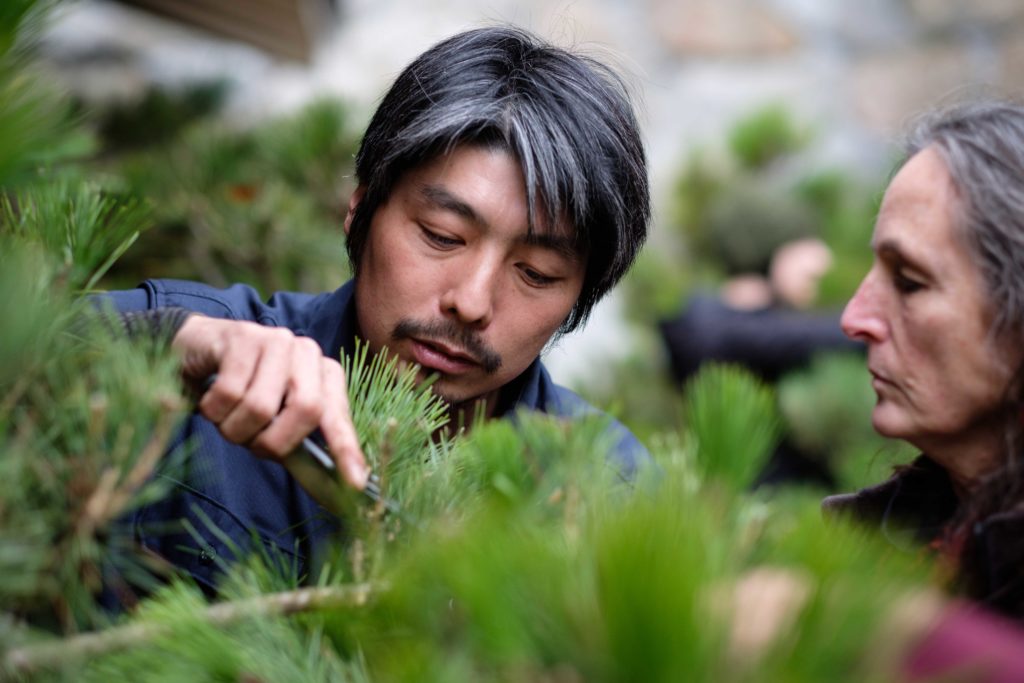
Japanese Gardening with Ease
This summer take a cue from the West’s most impressive Japanese botanical gardens and use these principles to bring the contemplative ethos into your backyard.
Hugo Torii is director of grounds maintenance for Portland Japanese Garden, a space regarded as none other than “the most beautiful and authentic Japanese garden in the world outside of Japan” by the former Ambassador of Japan to the United States. So when we wanted to learn the essential elements of Japanese gardening and how to apply them in our own gardens, we turned to the custodian of a place that exquisitely balances Japanese tradition with locality.
While temporarily closed, the gardens are a stunning combination of Pacific Northwest native plants and ornamental species from Japan, plinths of Columbia River basalt, and a genbugan boulder from Japan. No element feels forced. It’s important to understand each material’s ki, or true essence; once you learn these, Torii says, “let them live.”

Hugo Torii at the Portland Japanese Garden. Photo by Peter Friedman, Courtesy of Portland Japanese Garden.
This isn’t to say that the rocks and plants are left completely to their own devices: The human hand is still subtly evident. In late winter, the pines are needled (hamushiri) to give them some breathing room. Thinning (sukashi sentei) and restorative pruning (shukufuku sentei) don’t just control the density of the plant, they also provide a visual depth of field and make the plants more photogenic.
This time of year, the pines are candled (metsumi), a process in which the apical shoots that stand up at the end of the branches like candles are snipped off to control the direction of new growth. Come summer the mosses will change from emerald green to chartreuse.
Torii’s approach to minding the garden grounds is one that we can all learn from—it starts by paying attention to these signals. “We have to force ourselves to study nature,” he says. In home gardens, one might not have access to the profundity of a mature forest, but creating a miniature version of nature is one of the goals of a Japanese garden. Whether wild or tamed, large or small, green spaces like forests and gardens all basically convey one universal truth: The garden happens inside us. The way we feel when we spend time outdoors is akin to a religious experience. When the first Japanese gardens were planted (around the 6th century CE) they typically surrounded temples, which was entirely the point. A Japanese garden seeks to reproduce the humbling and peaceful sense of being in nature as it presents itself, just on a smaller scale.
The Japanese Tools Every Gardener Needs
The tools Hugo Torii uses the most.
Our Favorite Basic Garden Tools
This story originally appeared in our summer 2020 Outdoor Living issue.
To read: Click on the right and left arrows at the edge of the box to turn pages; to make the text larger click on the fullscreen icon in the lower-right corner.
